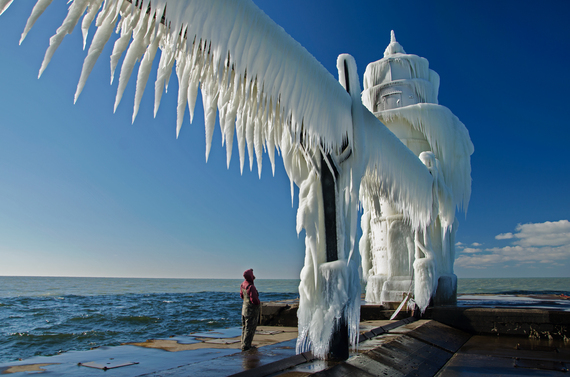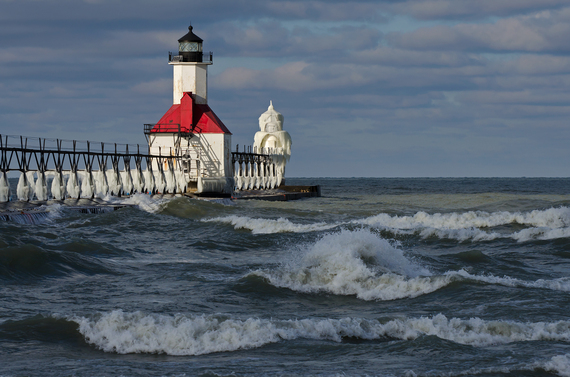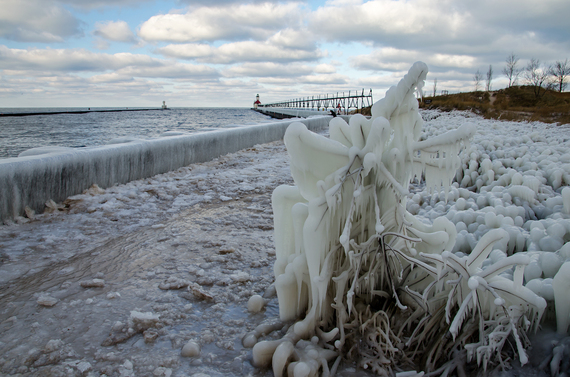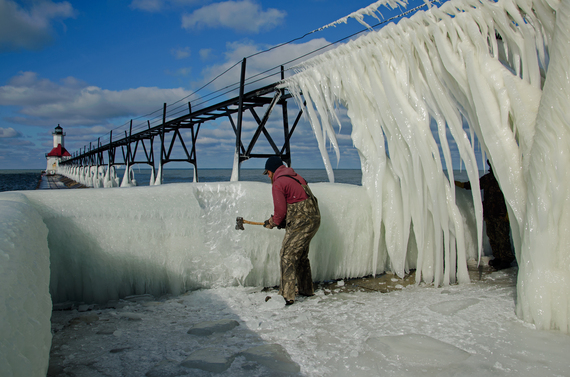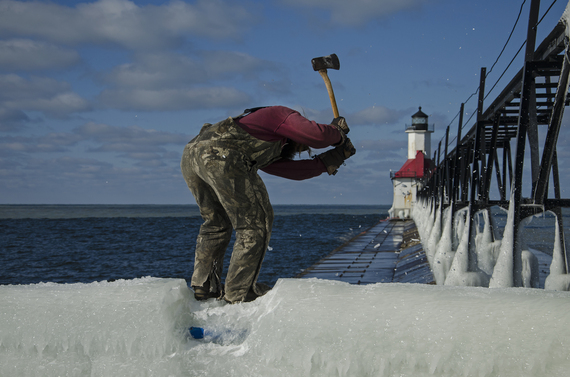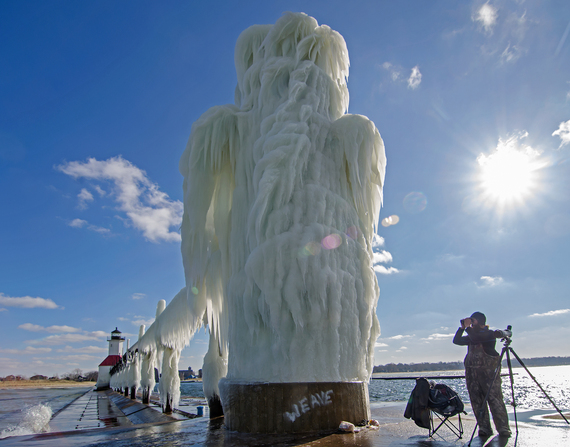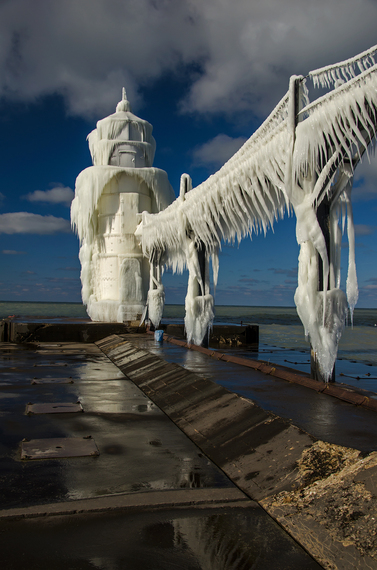In January 2014, photos of the ice covered St. Joseph, Michigan lighthouse went viral - thanks in large part to the Huffington Post featuring my photos many months prior. At the time, people assumed the images were taken during the current polar vortex, so they swarmed to the St. Joseph shore to take a look for themselves. To their disappointment, the lighthouse was encased in little ice. This did, however, create a buzz for frozen lighthouse images. While the images are unusual, the event is not, and I try to photograph each one.
In fact, in late November of this year, an early arctic weather pattern turned the Midwest cold and windy - the perfect ingredients for iced lighthouses on the Great Lakes. When I arrived at the lighthouse, my expectations were correct. This was the earliest I can remember, where the outer lighthouse in St. Joseph, Michigan was completely covered in ice. As a rule, mid to late December is the typical time for icing -cold, windy, and the lake is still liquid. Any later, and Lake Michigan tends to freeze over, and the splashing and spray are suppressed, so the lighthouses don't ice up.
Beating the forecast for warm weather and rain, I headed out to photograph the lighthouse before the ice melted, and before the skies turned to rain. Following an hour or two capturing images from shore, I headed out on the inner pier only to find the railings completely ice covered. While this is nothing new, the ice also covered the only space between the rails allowing people to walk to the inner and outer lights. I considered climbing over, but the return climb was certainly not as easy, and not safe.
After a time photographing the pier and inner light, a rather familiar person came walking down the pier. It was a local man who studies bird migrations from the pier. I've run into him over the last six or seven years here, no matter what winter day I venture out to photograph the lighthouse from the end of the icy pier. Today, along with his spotting scope, he was armed with an axe, and ready to chop the ice away from a portion of the railing so he could access the far end of the pier.
He worked at chopping the ice for almost an hour; I watched along with two fishermen and a few amateur photographers. He finally made enough progress for us to safely climb over the rail. He held my camera gear as I climbed over to fasten a rope to the catwalk upright about 20 feet away, then back to the rail for a handhold in case we needed it on the return trip. Once over, I assisted a fellow photographer over the rail, and we made our way on the narrow surface past the inner lighthouse, to the outer light. We were the first people this season to access the frozen outer light, and also to photograph it from the end of the pier.
Rounding the far corner of the inner lighthouse, I was greeted by white, sun-bathed ice against a deep blue sky. The lighthouse tower is 35 feet tall, and it was covered in ice to the top. The connecting catwalk was built about 10 feet above the pier to protect lighthouse keepers and workers from the dangerous waves of Lake Michigan. It's easy to see by the ice formations, that the catwalk would do little to prevent workers from getting soaked by the spray, and possibly washed over the rail.
Because it was an early freeze, the deck of the outer pier was wet, not frozen, as the waves of Lake Michigan washed over it. The water was just above freezing, so it kept the ice from forming on the deck, allowing safe passage without the worry of slipping into the cold water. This was something unexpected, as I often need to walk on lumpy ice and snow to access the outer lighthouse.
You can view more images from this photo journey in this Huffington Post feature.
In a few more weeks, the water will freeze almost instantly on the deck, creating very dangerous conditions for visitors. The shore of Lake Michigan in winter can be extremely dangerous - deadly in fact. One must understand just how deadly before they venture out near the winter shore. More about that in a later post...

